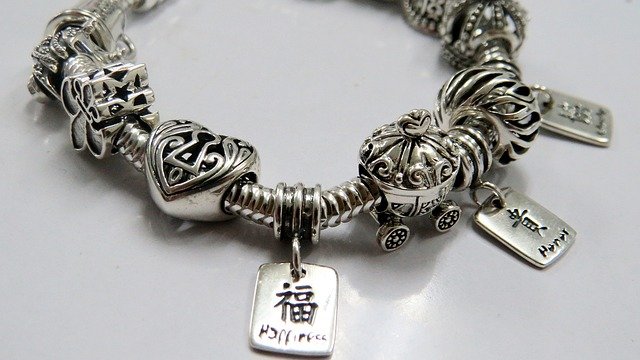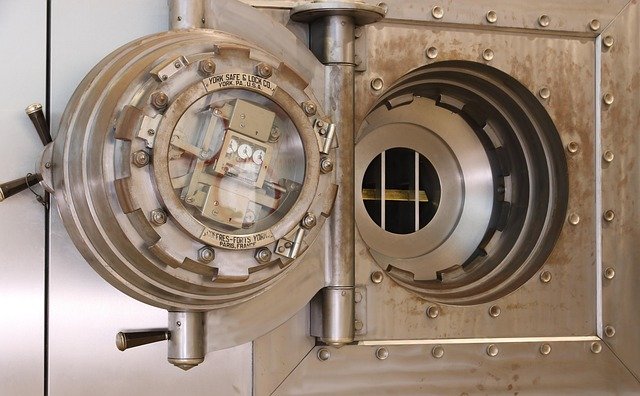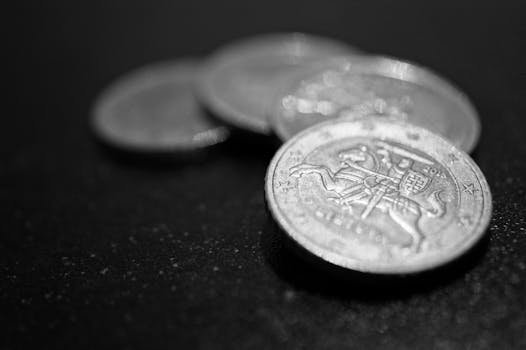Liquidity, Melt Value & Typical Spreads
Junk silver isn’t junk at all. It’s the industry shorthand for widely circulated, non-collector silver coins—usually sold by face value or by the bag—whose worth comes from their metal content, not rarity. For cost-conscious stackers and anyone who values divisibility and fast resale, junk silver can be the most practical way to own silver. This guide shows you how to calculate melt value, what premiums and spreads are normal, which denominations make sense, and how to buy/sell with confidence in US/UK-centric markets.
Introduction: What “junk silver” really means (and why it’s not junk)
When dealers say “junk silver,” they mean circulated silver coinage with little or no numismatic premium—think common pre-1965 US dimes and quarters that have seen pocket change since the 1950s. The coins may look worn, but the silver inside is the same silver you’d get in a shiny 1-oz round. The critical difference is pricing and packaging: junk silver is typically sold by face value (e.g., $10 face, $100 face) rather than by troy ounces, and it carries lower premiums than most government bullion coins. That makes it attractive for barter potential and micro-transactions where a full ounce is too much.
The “junk” label can spook beginners, but in practice it’s a feature: you’re not paying for collectible scarcity, grading, or capsules—just for the metal content and recognizability. In a rush sale, a tube of pre-1965 dimes is often easier to move than niche bullion products because every coin shop knows exactly what it is, how much silver is inside (roughly), and how to price it. The flipside is bulk: junk silver is physically heavier per dollar of value, storage is less tidy than tubes of modern coins, and premium/condition can vary by lot. Understanding the melt math and typical buy/sell spreads will keep your expectations realistic and your execution tight.
Definition and common forms
Pre-1965 US 90% silver coins (dimes, quarters, half dollars)
The workhorses of junk silver are US dimes (Roosevelt/Mercury), quarters (Washington), and half dollars (Walking Liberty/Franklin/Kennedy 1964) minted in 90% silver. These coins are bought/sold in face-value bundles: $10, $50, $100, or the classic $1,000 face “full bag.” Dealers and stackers love them because the silver content per $1 face is predictable (more on that below) and authentication is fast (dates and basic tests). Liquidity in the United States is excellent; in Canada/UK/EU the category is known and tradable, though slightly more niche than local bullion.
Pre-1947 British silver coins
In the UK, the legacy junk-style bucket includes pre-1947 British coinage (50% silver) and pre-1920 sterling (.925) coinage. While not as standardized in trade as US 90%, these older coins move well in the UK because dealers understand the periods and fineness. If you buy UK junk silver, be sure to separate .925 (pre-1920) from .500 (1920–1946) and post-1947 (no silver) to avoid pricing confusion.
Other historical circulated silver
Beyond the US/UK core, some stackers pick up Mexican, Swiss, or European pre-WWII silver. These are perfectly valid as melt plays, but regional familiarity matters for resale. The more local the coinage to your exit market, the tighter the spreads you’ll likely get.
Why “junk” (no numismatic value, worn condition)
“Junk” simply flags that coins are too common or too worn to carry collector premiums. You’re paying for silver weight, not rarity. Expect mixed dates, clear circulation wear, and the occasional oddball coin. That’s normal and priced in.
Silver content and melt value
US 90% calculation: $1 face value = 0.715 troy oz pure silver
Fresh-from-the-mint math gives 0.7234 troy oz of pure silver per $1 face in 90% coinage (because $1 face weighs 25 g gross at 90% fineness). In real life, circulation wear trims that to the industry standard 0.715 troy oz per $1 face. Use 0.715 for everyday melt math.
Melt formula (US 90%)Melt Value (€/$) = Face Value ($) × 0.715 (oz) × Spot Price (per oz)
Example: $100 face in 90% at $25/oz spot ≈ $100 × 0.715 × $25 = $1,787.50 melt (before premiums/fees).
US 40% Kennedy halves (1965–1970): different calculation
The 1965–1970 Kennedy half dollar is 40% silver. The rule of thumb is $1 face = 0.295 troy oz of pure silver. Liquidity is decent, but many dealers and stackers prefer 90% because it’s simpler and better recognized outside the US.
Melt (US 40%)Melt = Face Value × 0.295 × Spot
British silver content by period
- Pre-1920: .925 sterling, melt per face must be computed by coin/denomination (not sold by “face value” multiples like the US).
- 1920–1946: .500 silver. Again, calculate by coin type/weight—dealers often sell by net silver weight or by mixed lot weight rather than face.
How to calculate melt value
- Identify type/fineness (US 90%, US 40%, UK .925/.500).
- Convert face value → troy ounces using the right factor (e.g., 0.715 for US 90%).
- Multiply by spot price.
- For non-US sets, weigh the pile and apply fineness:
Pure Oz = (Gross grams × fineness) ÷ 31.1035.
Why junk silver exists as a category
Historical: silver removed from circulation
In the US, the Coinage Act of 1965 removed silver from dimes/quarters (and reduced halves), pushing silver coinage out of everyday use. Similar debasements happened across the world after WWI/WWII. The market labeled the leftovers “junk silver” as they transitioned from money to metal.
Too worn/common for numismatic value
Most circulated coins aren’t rare; even century-old pieces are common in low grades. Dealers sort out keys and semi-keys and wholesale the rest as melt. That keeps pricing simple and fair for stackers.
Sold by face value or bag weight
The US trade optimized around face value (e.g., $1,000 face “full bag” ≈ 715 oz silver and weighs about 25 kg / 55 lb). That convention makes quoting, shipping, and hedging easier for dealers.
Recognizable and divisible
Every coin shop knows a Mercury dime or Washington quarter. A $10 face roll breaks into 20–40 tiny transactions if you ever needed it—useful for gift-sized sales or barter-style swaps among friends.
Pricing structure and premiums
Sold by face value multiples ($1, $10, $100, $1,000 face)
Listings often say “$10 face 90%” or “$100 face 90%.” You pay a total price that implies a multiple of face value (e.g., 22× face, 24× face), which embeds spot + premium in one figure.
Typical premium: 5–15% over melt
In calm markets, junk silver commonly trades about 5–15% over melt (sometimes less for big bags, more for small lots). In supply crunches, that premium can widen, but it generally stays below the premiums on popular 1-oz government coins.
Premium factors: demand, condition, denomination
- Demand spikes (e.g., retail rush) push premiums higher.
- Dimes/quarters can carry slightly higher % premiums than halves because of divisibility.
- Cleaner, evenly mixed lots may command small uplifts versus haphazard bags.
Comparison to bullion coin premiums
Popular 1-oz coins (Maple/Britannia/Philharmonic) often run 12–25% over spot in silver; junk’s 5–15% makes it a value play—provided you’re comfortable with the bulk and aesthetic trade-offs.
Liquidity analysis
Pros: widely recognized, easy to authenticate, fast-selling
In the US, junk silver is as liquid as it gets: every LCS (local coin shop) quotes it, larger dealers publish live bids, and national wholesalers move thousands of bags. Authentication is date + quick tests, so intake is fast.
Cons: requires buyer knowledge, condition varies
Outside the US/UK, buyers might need a minute to recall factors (0.715 for 90%, 0.295 for 40%). Cosmetic tarnish is normal, but newcomers sometimes balk—set expectations when reselling peer-to-peer.
Dealer buy-back spreads: typically 2–8%
Calm-market buybacks for common 90% lots often fall close to melt (e.g., spot −1% to −4% on net silver), translating to 2–8% round-trip when you consider your purchase premium. Spreads narrow for larger, uniform lots.
Regional liquidity (excellent US, good UK, limited elsewhere)
- US: Excellent (the benchmark market).
- UK: Good for pre-47 and US 90% at informed shops.
- EU/ROW: Variable—sellable, but fewer standing bids than for local bullion coins.
Spreads: buying vs selling
Buy at 12× face, sell at 10× (example)
Suppose spot implies 10× face melt. If you buy at 12× and later sell to a dealer at 10×, your round-trip spread is ~16.7%. If you bought closer to 11× and sold at 10.5×, that spread shrinks to ~4.8%. The art is buying near melt and selling into dealer needs (or to peers at a midpoint).
Condition impact on spread
Extremely slick coins (barely legible) may be discounted; culls aren’t a big problem if priced right, but clean, average-circulated lots exit faster and closer to melt.
Quantity impact (bags sell easier than small lots)
Dealers love $1,000 face and $100 face because they’re hedge-friendly. A few straggler dimes? They’ll buy them—but the bid may be lower due to handling time.
Advantages of junk silver
Lower premiums than bullion coins
On average you’ll pay less per ounce than brand-new government bullion, especially when buying hundreds of face dollars at once.
Divisibility (dimes/quarters for small transactions)
A dime (~1/14 oz silver) or quarter (~1/5 oz) lets you tailor tiny trades. That flexibility is unique among silver formats.
Barter potential
If you care about small-unit exchange, junk silver is ideal: highly recognizable, easy to explain and value without a scale.
Historical hedge: survived 1965 currency debasement
These coins are proof of concept that government money can lose silver content while old silver retains value—a compelling history lesson baked into your stack.
No serious counterfeiting incentive
Faking circulated dimes for a few bucks of silver content is rarely profitable. Counterfeits exist in every category, but junk silver is a low-risk target compared with high-premium bullion.
Disadvantages of junk silver
Wear and handling issues
Coins often have rim wear and surface marks. That’s fine for melt, but not pretty. If you crave shiny perfection, junk isn’t for you.
Storage inefficiency (bulk per value)
A $1,000 face bag weighs ~25 kg / 55 lb. Compare that to a compact stack of 1-oz coins or 10-oz bars for the same melt—junk takes more space and muscle.
Tarnish and corrosion
Toning is normal and does not affect melt value, but keep coins dry and avoid PVC flips to prevent sticky residue.
Calculating exact silver content is tedious
You’ll memorize 0.715 quickly, but mixed lots, 40% halves, and foreign coinage force you into spreadsheets if you want precision.
Limited international recognition
A US shop instantly prices US 90%. A random EU shop might prefer Philharmonics and shave their bid a little on unfamiliar coinage.
Common denominations compared
Dimes: best divisibility, highest premium per oz
Ten pre-65 dimes = $1 face = ~0.715 oz. Dimes are perfect for micro-exchanges, but their per-ounce premium can run slightly higher because handling is a pain.
Quarters: balance of divisibility and efficiency
Four quarters per $1 face hit the sweet spot of ease + divisibility. Many stackers standardize on quarters for this reason.
Half dollars: lower premium, less popular
Two halves per $1 face handle quickly and stack nicely. Some buyers love them, others find dimes/quarters easier to trade in tiny amounts. Premiums are often a touch lower.
Dollars (Peace/Morgan): semi-numismatic, higher premiums
Peace and Morgan dollars are beloved—but they straddle the line between junk and collectible. Expect higher premiums and more grade/condition arguments. Great coins, just not pure melt plays.
Bags and bulk purchasing
$100 face value bag ($1,000 face full bag)
Dealers may offer $100 face (~71.5 oz), $500 face (~357.5 oz), and the classic $1,000 face (~715 oz). Larger bags tend to unlock better per-face pricing.
Weight and storage (full bag ~55 lb)
A full bag is heavy. Plan sturdy shelving, handles, and desiccants. Consider splitting into banker’s bags for manageable lifting.
Quantity discounts
Ask explicitly for price breaks at $100/$500/$1,000 face. Wire/ACH and in-person pickup can shave costs.
Mixed vs single denomination
Mixed bags are normal, but some buyers pay a bit more for all-quarters or all-dimes to standardize their stacks.
Authentication and verification
Why counterfeits are rare (low margin)
A counterfeiter making worn dimes would earn pennies per coin—not worth it. Most “fakes” you see in junk lots are wrong-era clads someone forgot to pull, not malicious counterfeits.
Quick checks: weight, sound, magnet test
- Weight/dimensions (spot-check a handful).
- Ring test: silver makes a clear, high “ping.”
- Magnet: real silver is not magnetic (but don’t confuse with stainless steel reactions—use a magnet slide if you have one).
Date verification (pre-1965 US, pre-1947 UK)
Train your eye: pull any 1965+ US dimes/quarters (clad), and post-1946 UK. A 10-minute date scan on intake saves arguments later.
Storage considerations
Bulk and weight issues
Bags are rugged, but not stealthy. Many stackers re-tubed rolls into square tubes/boxes for better density and labeling.
Tarnish prevention (doesn’t affect melt value)
Use silica gel, store cool & dry, and avoid PVC. Toning is cosmetic; don’t clean coins (it adds no value and looks suspicious).
Organization by denomination
Label containers by denomination and face value (e.g., “$200 face quarters”). It speeds inventory and resale.
Tax treatment
US: 28% collectibles rate (same as other silver)
Physical silver gains (including junk) are taxed as collectibles in the US—up to 28% for long-term gains. Short-term gains are ordinary income. Keep purchase/sale records.
EU/UK: VAT & local CGT rules
In most of the EU, silver purchases include VAT (investment gold is exempt; silver isn’t), which is a structural cost. Resale and CGT treatment vary by country; in the UK, silver legal-tender coins (e.g., Britannias) can be CGT-exempt for UK residents, but VAT still applies at purchase. Junk silver’s tax treatment follows general silver rules—check your local guidance and keep invoices.
Reporting requirements
Large cash transactions can trigger AML/KYC at dealers. Expect ID for larger buys/sells and follow local reporting rules.
This section is educational, not tax advice. Confirm with a tax professional in your jurisdiction.
When junk silver makes sense
Bartering scenarios
If you value the option to trade in small units, nothing beats pre-65 dimes/quarters. They’re self-denominating and intuitive to price.
Small-value divisibility needs
Need “change” within your stack? Junk silver is the change drawer for your precious metals.
Lower premium accumulation strategy
If you’re stacking ounces on a budget, junk silver’s lower premiums (vs 1-oz bullion) compound over time—especially when bought in bigger face-value lots.
Historical interest
If you like the idea of owning pieces that actually circulated as money, junk silver scratches both the stacker and history buff itch.
Junk silver vs bullion coins: decision matrix
| Priority | Pick | Why |
|---|---|---|
| Lowest entry premium | Junk silver (90%) | Typically 5–15% over melt, cheaper than many 1-oz coins. |
| Tightest resale spread | Major 1-oz coins | Maple/Britannia/Phil can sell closer to spot with posted bids. |
| Maximum divisibility | Dimes/quarters | Ideal for micro-transactions and fine-tuning sales. |
| Compact storage | 1-oz coins/bars | Denser storage and easier inventory than loose coins. |
| International exit | Local bullion coins | Local recognition = faster bids; junk is US/UK-centric. |
Your junk silver buying guide
Junk silver is the workhorse of budget stacking: liquid, divisible, recognizable, and usually cheaper (per ounce) than shiny new bullion coins. The trade-offs are bulk, aesthetics, and the need to understand melt math. If you buy near melt (mind the 0.715 factor), stick to common denominations, and sell into dealer demand with tidy, labeled lots, your round-trip costs can be very competitive. For global portability or the tightest buybacks, pair junk silver with a core of high-liquidity 1-oz coins. Keep clear records, store smart, and remember: the goal is ounces you can sell quickly, at a fair spread, whenever you need to.
Tight spreads rely on buyer confidence. Handling flaws like milk spots can tilt bids against you, so brush up on common silver risks (milk spots, micro-scratches, humidity) before stacking. And if liquidity is your priority this quarter, compare the tactical case silver vs. gold: when to hold each.



